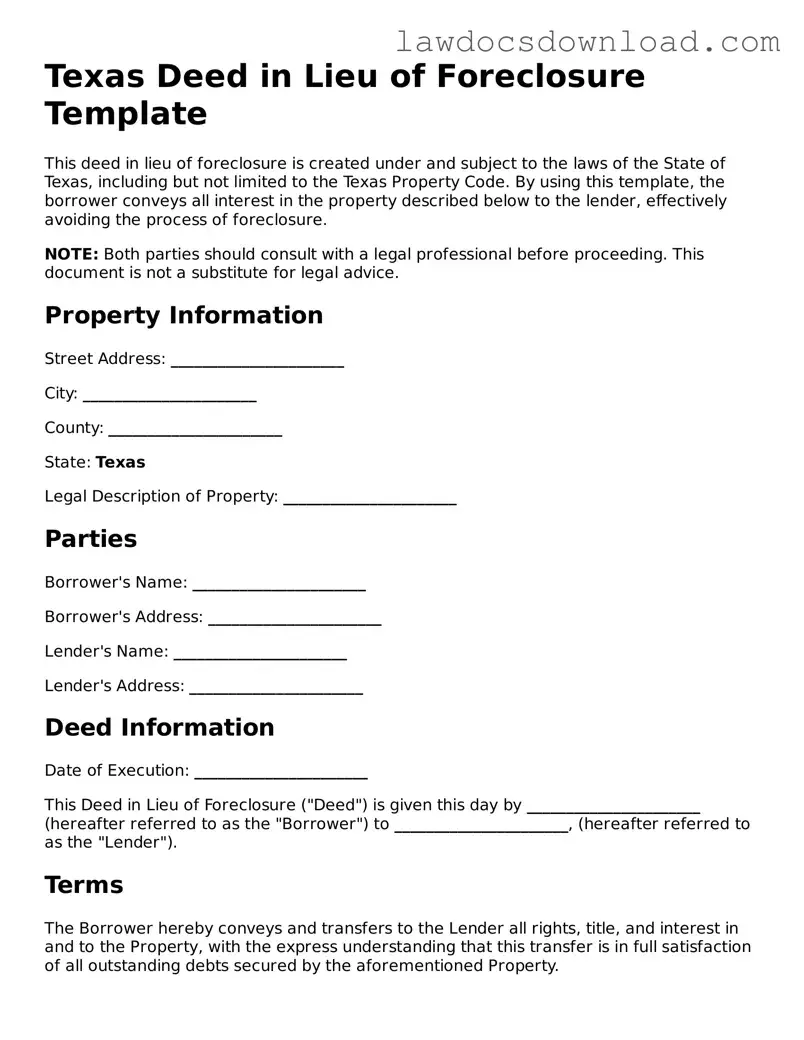Texas Deed in Lieu of Foreclosure Template
This deed in lieu of foreclosure is created under and subject to the laws of the State of Texas, including but not limited to the Texas Property Code. By using this template, the borrower conveys all interest in the property described below to the lender, effectively avoiding the process of foreclosure.
NOTE: Both parties should consult with a legal professional before proceeding. This document is not a substitute for legal advice.
Property Information
Street Address: ______________________
City: ______________________
County: ______________________
State: Texas
Legal Description of Property: ______________________
Parties
Borrower's Name: ______________________
Borrower's Address: ______________________
Lender's Name: ______________________
Lender's Address: ______________________
Deed Information
Date of Execution: ______________________
This Deed in Lieu of Foreclosure ("Deed") is given this day by ______________________ (hereafter referred to as the "Borrower") to ______________________, (hereafter referred to as the "Lender").
Terms
The Borrower hereby conveys and transfers to the Lender all rights, title, and interest in and to the Property, with the express understanding that this transfer is in full satisfaction of all outstanding debts secured by the aforementioned Property.
In consideration for this Deed, the Lender hereby agrees to release the Borrower from all obligations under the mortgage. The parties understand and agree that this Deed in Lieu of Foreclosure is in full settlement of all debts and obligations.
The parties agree that this Deed shall be recorded in the county where the Property is located to effectuate its terms fully.
Acknowledgment
Each party acknowledges they have had the opportunity to consult with legal counsel, have carefully read this Deed, understand its contents, and sign it willingly and under no duress or undue influence.
Signatures
Borrower's Signature: ______________________ Date: ______________________
Lender's Signature: ______________________ Date: ______________________
State of Texas
County of ______________________
This document was acknowledged before me on ______________________ by ______________________.
Notary Public: ______________________
Commission Expiration: ______________________
